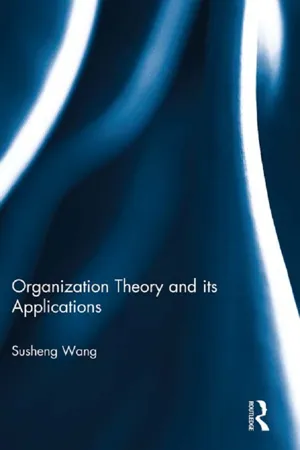![]()
1 Complete contracts
1. Introduction
In this chapter, we discuss income-sharing agreements only. That is, contracts in this chapter contain income rights only.
Besides asymmetric information, there is another type of information problem, called the incentive problem. For example, in an employer–employee relationship, the employee’s applied effort may be observable by his employer but not verifiable to a court. If so, the effort cannot be bounded by a contract. In this type of problem, information is symmetric: both the employer and the employee have the same set of information. But the court cannot observe the information. So the issue here is: how does the employer provide sufficient incentives in a contract to motivate the employee?
For convenience, in this book, a solution to an asymmetric information problem is called a policy, a solution to an incentive problem is called a contract, and both of them are referred to as mechanisms. Mechanisms include all kinds of strategic and equilibrium solutions, such as the price mechanism in general equilibrium and staged financing in venture capital investment. A policy in an asymmetric information problem has traditionally been called a mechanism, and the exercise of searching for the optimal policy is referred to as mechanism design. A policy ensures that the agent picks the offer intended for him, while a contract ensures that the agent takes the action intended for him. This is the so-called revelation principle. Efficiency is more difficult to achieve in an agency model than in an asymmetric information model. The reason is that the incentive compatible (IC) condition in an asymmetric information model is to shoot a given target (the truth), while the IC condition in an agency model is to shoot a moving target (the optimal effort, which is to be determined in equilibrium).
We call contracts in this chapter complete contracts, since each of them is assumed to be the only mechanism in the model. We emphasize the completeness, since if they are treated as incomplete contracts they may not even be optimal. We will explain why they are called complete contracts in more detail in Chapter 2.
This chapter will cover motivation for contract theory, the standard contract theory, and special but popular forms of contracts.
2. Contracts in reality
2.1. Employment contracts
Employment contracts are conditions and promises that determine an employer–employee relationship.
The best-known employment contract is a labor contract, by which an institution hires a worker. A labor contract may specify a wage scheme, employment length, working hours, and certain requirements. It may also specify conditions under which an employee may quit his job and the employer may fire the employee.
Besides labor contracts, there are many types of employment contracts. for example, a plaintiff may hire a lawyer to represent him in the court. A landlord may hire a tenant to plant and harvest crops on her land. A family may hire a babysitter to take care of a young child.
2.2. Financial assets
There are many forms of financial assets. Many financial assets are financial contracts that promise a payment or a transfer of assets at certain points in time under certain conditions. Many financial contracts are created by issuers to deal with information and incentive problems. Other pe...
